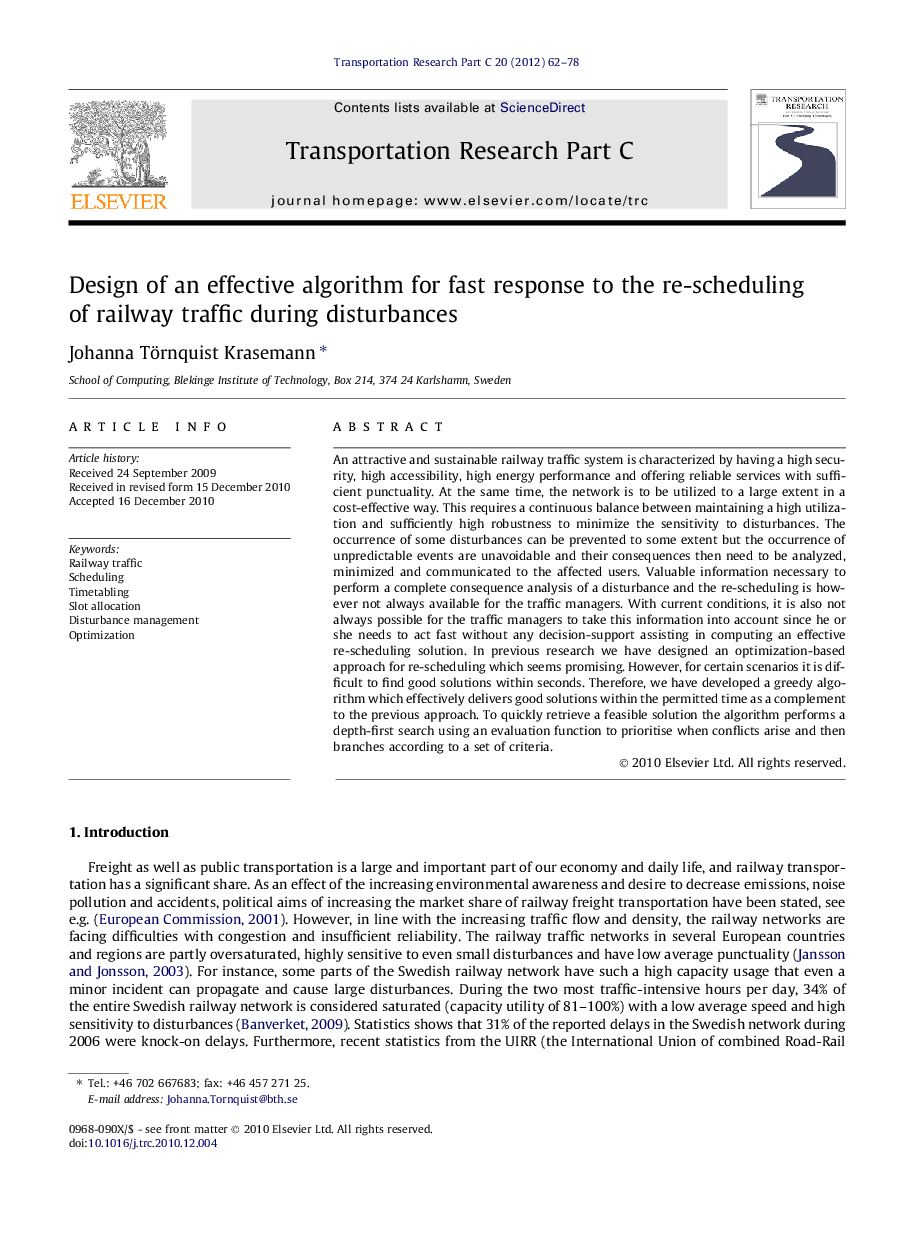| Article ID | Journal | Published Year | Pages | File Type |
|---|---|---|---|---|
| 525455 | Transportation Research Part C: Emerging Technologies | 2012 | 17 Pages |
An attractive and sustainable railway traffic system is characterized by having a high security, high accessibility, high energy performance and offering reliable services with sufficient punctuality. At the same time, the network is to be utilized to a large extent in a cost-effective way. This requires a continuous balance between maintaining a high utilization and sufficiently high robustness to minimize the sensitivity to disturbances. The occurrence of some disturbances can be prevented to some extent but the occurrence of unpredictable events are unavoidable and their consequences then need to be analyzed, minimized and communicated to the affected users. Valuable information necessary to perform a complete consequence analysis of a disturbance and the re-scheduling is however not always available for the traffic managers. With current conditions, it is also not always possible for the traffic managers to take this information into account since he or she needs to act fast without any decision-support assisting in computing an effective re-scheduling solution. In previous research we have designed an optimization-based approach for re-scheduling which seems promising. However, for certain scenarios it is difficult to find good solutions within seconds. Therefore, we have developed a greedy algorithm which effectively delivers good solutions within the permitted time as a complement to the previous approach. To quickly retrieve a feasible solution the algorithm performs a depth-first search using an evaluation function to prioritise when conflicts arise and then branches according to a set of criteria.
Research highlights► Disturbances in railway traffic are a common and well-known problem. The capability to effectively re-schedule the traffic in real-time is vital. We present a greedy-algorithm using depth-first search to assist train re-scheduling. The performance of the algorithm was evaluated in simulated experiments. It delivers good solutions in a few seconds and for different disturbance types.
